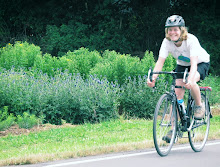The next three days provide a comfortable routine of food preparations, walks, and conversations with fellow workshoppers and Navadarshanam trustees, which slowly erodes my cynicism and changes my perspective from looking at what the place isn’t to appreciating it for what it is: an apolitical space for people with very specific ideals to live out a model lifestyle.
The most important insight I gained at ND came from observing the lack of political spin that surrounds their philosophies. I think this comes as a result of approaching life from a strictly spiritual perspective, one based in traditional Eastern schools of thought advocating unselfishness and living within one’s means. From this, the trustees arrived at five practical applications for their living space: reforestation of the bare land; energy and water independence; renewable building materials (mud bricks and wood); natural farming; and eating healthfully. They don’t really advertise themselves as living “sustainably” or having an “alternative lifestyle” – they’re not fighting the commercial world or pushing changes on anybody. So there’s nothing to be political about. Also, their practices aren’t really new, as traditional Indians have done these things (minus the high-tech solar panels) for centuries. Hinduism, like many religions, advocates simplicity and awareness of people and beings other than oneself.
This cultural context might explain why most of the workshop participants seemed fairly mainstream*. They weren’t interested in going off the grid or changing the government’s policy toward organic farmers, they just wanted to learn how to cook good food, and the setting happened to be one in which they picked up a lot of “environmental” messages as well. But in India, unlike in the US, people can dip into these kinds of “unconventional” areas without being labeled with the glorious spectrum of labels we have for anything different – from “environmentalist” to “hippie” – simply because going back to the land in this way is anything but unconventional. Globalization only started (in its current form) a couple of decades ago. While Americans would have to go back to colonial days to reach the minimal level of impact places like ND strive toward, Indians only need look to the nearest village, where people regularly gather “biofuel” (wood) and practice “green architecture” (mud and thatch huts, which are always cool inside). As a result, buying organic food (which is not prohibitively expensive here, if you can find it) or trying to conserve electricity is not a political statement like it is often made to be in the US, it’s simply an extension of being a rational, future-minded person.
*With the exception of my fellow “international team” members – Tania and Manuel from Colombia who shared my inability to fry a proper roti or appreciate pickled lemon rind.
Subscribe to:
Post Comments (Atom)




No comments:
Post a Comment